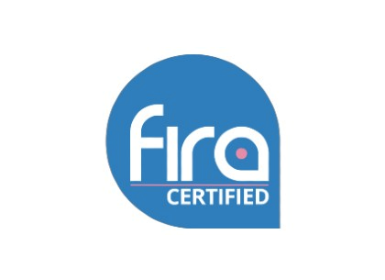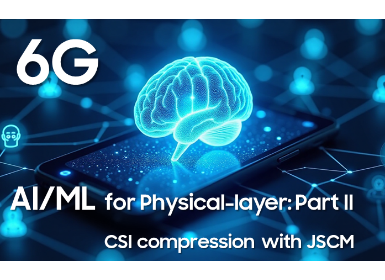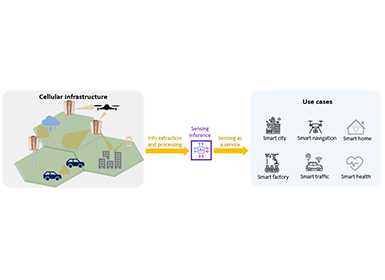Communications
FiRa Consortium Releases Common Service & Management Layer and Physical Access Control System Specifications v1.0
FiRa Consortium (https://www.firaconsortium.org/) was founded in August 2019 with the goal of establishing an ecosystem of devices and services utilizing Ultra-Wide Band (UWB)-based ranging and location services. FiRa is committed to developing robust technical standard solutions and a device certification program that will improve user experiences and security and also enable interoperability among FiRa technical solution supporting devices. FiRa Consortium released the 1st MAC & PHY layer technical requirements specification and also launched the MAC & PHY certification programs in 2021.
In order to ensure the interoperability within use case verticals, there was a need to develop higher layers above MAC & PHY as shown in Figure 1 that would enable devices to discover each other, configure ranging sessions, and essentially allow applications to make use of underlying UWB MAC & PHY for their use cases. To enable this, FiRa Consortium has worked on developing the Common Service & Management Layer (CSML) specifications along with its sub-specifications like BLE OOB (Out-Of-Band), SUS (Secure UWB Service) API, and corresponding Profile Specifications, e.g., Physical Access Control System (PACS) specifications for physical access control use case.
CSML acts as a common layer, which supports the development of multiple profiles that cater to various use case verticals. CSML provides framework components that enable Service Applications to be developed and deployed on top of it.
The following sections will highlight the various features enabled by these specifications for eco system interoperability, and the value that is obtained when these specifications are implemented by the FiRa devices.

Figure 1. FiRa technical layers
Common Service & Management Layer (CSML) Specification
The CSML specification provides the following mechanisms for FiRa devices:
• Device Discovery - Discover each other using Out-Of-Band (OOB) mechanisms. Currently Bluetooth LE based (BLE) discovery is supported.
• Profile Discovery - Discover which profiles are supported by the Device.
• Device Configuration – This includes Device UWB capabilities exchange and UWB session configuration over the BLE OOB channel. This configuration includes key material for generating keys UWB Secure Ranging and parameters for the ranging session.
• Data Model – Defines standard data model for exchange of information between devices for Device Configuration. This model can be extended by various Profile specifications for exchanging profile specific data.
• Secure Channel support – Creation over Secure Channels over OOB channel, to enable Device Configurations securely.
• Reference APIs – Provides reference APIs that act as a guideline for developing OS specific APIs, to enable 3rd party application development.
Physical Access Control System (PACS) Profile Specification
The PACS specification describes what is needed for enabling the Access Control use case. It utilizes the services of CSML and extends functionality for the use case. The specification defines PACS specific UWB Configurations to enable inter-operability at the use case level and allows credential exchange over OOB channel to unlock the door.
PACS Use Case
Physical access control system (PACS) enables people to pass through a physical portal after authentication and authorization. Authentication in PACS requires to prove the person’s presence at a given moment, where UWB ranging can help in a precise and secure manner.
FiRa PACS realized seamless access as an experience achieved using UWB ranging features, where access is granted without intrusive actions to show intent (e.g., presenting a card, entering a PIN), whilst maintaining the same level of security. The secure and accurate ranging capability of UWB makes it a suitable technology to enable such an experience.

Figure 2. PACS door unlock scenario
Figure 2 illustrates the PACS door unlock scenario where features developed in CSML and PACS specifications have been used to realise the use case.
BLE OOB mechanisms defined in the BLE OOB specification which is a sub-specification of CSML are used for device discovery and application selection (in case the device hosts multiple UWB applications). A secure communication channel is established between the devices, which is then used by the reader to retrieve the access credential. After successful authentication of the access credential, the reader negotiates the UWB RF parameters and shares a temporary session key (STS seed) with the credential device (e.g., smartphone). At this point, the BLE communication channel may be terminated and secure UWB ranging starts. Apart from providing the session key exchange to secure the UWB communications, BLE offers lower energy consumption overhead during the device discovery phase, particularly in scenarios where devices are running multiple BLE applications in parallel. At the start of secure ranging, the two devices are not synchronized and an UWB receiver may consume significant power when active. Using BLE for discovery and channel establishment allows the UWB receive time in active state to be minimized.
UWB radios on both ends are configured as per the negotiated UWB parameters. UWB ranging session enables calculation of closeness of the credential device to the reader, through which the reader can determine the proof of presence and intent. If the ranged distance over UWB is within the configured threshold, the door unlocks, thus providing seamless physical access. The FiRa 1st release specification has presented the technical basics of UWB as well as the key building blocks and architecture of a PACS, and how the two can be combined to achieve a seamless access experience.
Deploying such a PACS provides the added opportunity of supporting high precision indoor location services. This would require a backend system, aggregating ranging reports from individual readers, such that the necessary processing can be performed. In situations where access readers are sparsely populated, additional UWB anchors may be required to achieve adequate coverage. Another application, that is similar to physical access and may benefit from a UWB seamless experience, is public transportation (e.g., access gates to a subway).
Samsung Research is excited to lead this FiRa standardization for supporting your convenient and secure experiences like seamless access, indoor positioning, touchless payment, etc. using UWB connectivity supported mobiles.
References
- FiRa Consortium, https://www.firaconsortium.org
- Introduction to Impulse Radio UWB Seamless Access Systems,
https://www.firaconsortium.org/sites/default/files/2020-10/introduction-to-impulse-radio-uwb-seamless-access-systems-102820.pdf






